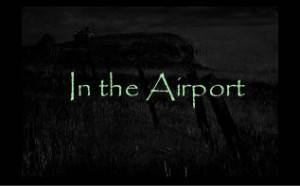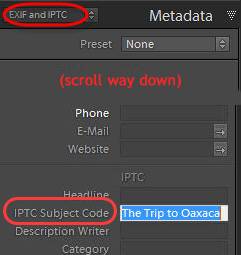 As I wrote in my last post, you can add beginning and ending title slides to your Lightroom slideshows by using the Intro Screen and Ending Screens in the Titles panel. But what if your slideshow has different sections, and you want a title slide introducing each section? It’s not as straightforward as perhaps it could be, but as long as you are o.k. with a white or black background for these slides, it can all be done in Lightroom. Here’s how:
As I wrote in my last post, you can add beginning and ending title slides to your Lightroom slideshows by using the Intro Screen and Ending Screens in the Titles panel. But what if your slideshow has different sections, and you want a title slide introducing each section? It’s not as straightforward as perhaps it could be, but as long as you are o.k. with a white or black background for these slides, it can all be done in Lightroom. Here’s how:
1. Create a virtual copy of any photo in the folder or collection you are going to use for the slideshow.
Right-click on the photo, and choose Create Virtual Copy.
2. Turn the virtual copy white or black.
To turn it white, in the Develop module start by increasing Exposure and Brightness all the way to the right, and reducing Blacks and Fill Light to zero. Then, using the adjustment brush, set Exposure and Whites all the way to the right and with a huge brush paint the whole photo. If it still isn’t white, click on “New” at the top of the adjustment brush panel, and repeat the settings and painting. Do this as many times as necessary. (You can also do this with the graduated filter, as I described in my post on Adding More.)
To turn the photo black instead, go with negative Exposure and Brightness, and +100 Blacks.
3. Now make as many virtual copies of this photo as you need for your section title slides.
Right-click on your first virtual copy and choose Create Virtual Copy as many times as you need to.
4. Put the desired slide text into the metadata for these virtual copies.
Use any metadata field that you would never use otherwise. I will use IPTC Subject Code for this example. Go to grid view in the Library module, select your first white/black virtual copy, and in the Metadata panel on the right side at the very bottom, find the IPTC Subject Code field (or a different field), type in the slideshow section title, and hit enter. Do this for each of these virtual copies. (The text won’t appear on them at this point.)
5. In the Slideshow module, display the metadata on the slides.
- In the toolbar below the slide display, click on the ABC button, and then click on the drop-down next to Custom Text, and choose Edit. (If your Toolbar doesn’t show, type “T”.)
- In the Text Template Editor (below), delete whatever is in the big white box, and then go down to the IPTC Data section and choose IPTC Subject Code. This will insert this field in the white box.
- I would recommend saving this “rule” as a preset if you plan to do this again. At the top, where it says Preset:, click on the drop down and choose Save Current Settings as New Preset. I named mine “Section Title Name”.
- Hit Done. (Now you will see that Section Title Name appears in the dropdown, so you won’t have to go into Edit next time, you can just choose it.)
- You should see a text box on your slide. If you have one of the white/black virtual copies selected in the filmstrip, the metadata title will appear on it. If you have a regular photo selected, <empty> will be displayed — don’t worry, this will not show when you PLAY the slideshow. Click and drag the text box to place it. Drag a corner to change its size.
- As long as the text box is still active (click on it if it is not), to change the color or font, go to the Overlays panel on the right. You will see a color rectangle to the right of “Text Overlays” that you can click on to change the color.

6. Move these section title slides to their correct position within your folder or collection.
Click inside the thumbnails and drag them to rearrange, using either the filmstrip or the Library module grid. (If it doesn’t work, see Why Can’t I Rearrange My Photos in Lightroom?)
7. Finally, play your slideshow by clicking on the PLAY button in the bottom right.



